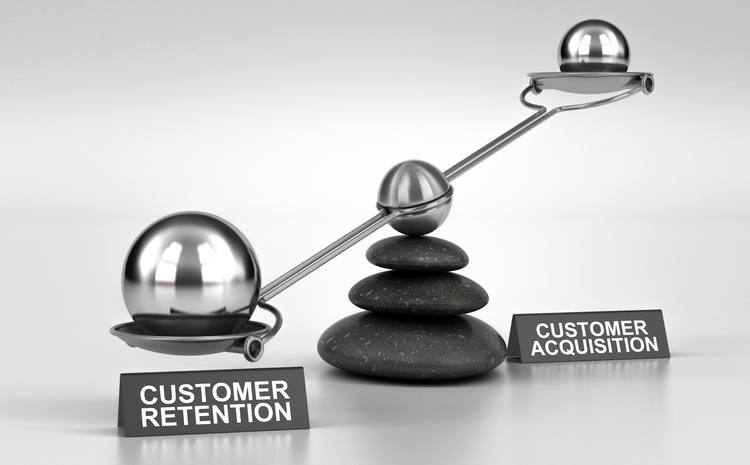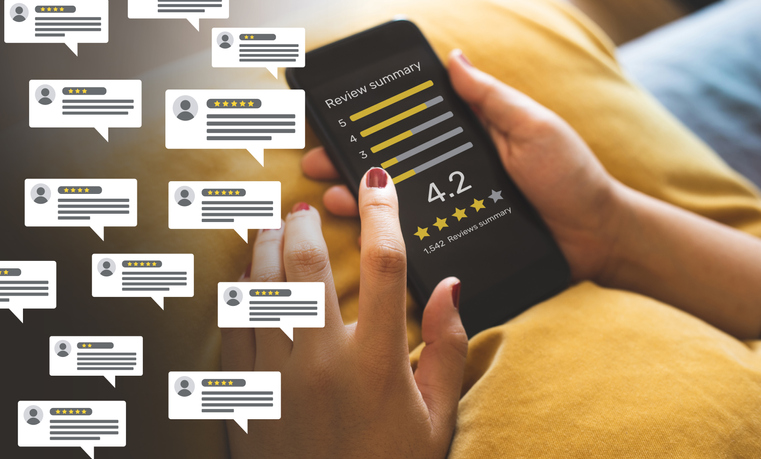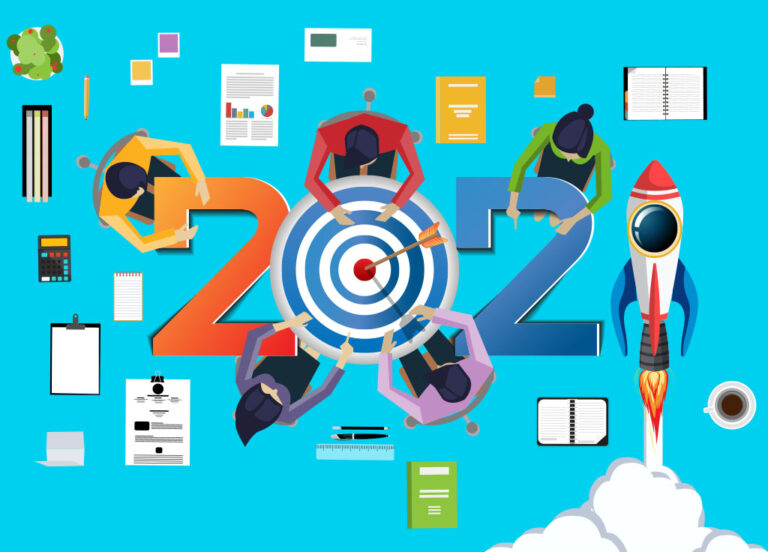What's Changed in B2B Marketing Trends Since 2020, and What's Still Exactly the Same
Breath a sigh of relief. 2020 is over. We made it. From the global lockdowns in the spring that shuttered businesses and put over half of the global population on stay-at-home orders to the economic turmoil, confusion, and chaos, 2020 has been an eventful year. It’s hard to describe. From every interaction turning into a risk-fueled affair to fear, innovation, and confusion, we’re certainly glad to put this year behind us, but we’re also looking forward to the changes it brought to the table and the B2B Marketing Trends to Watch for 2020.
I’ll start by saying this: marketing will probably never be the same again. Usually, these beginning-of-year marketing posts are filled with optimism and fervor. This year, I’m a bit more cautious. Changes aren’t creeping into the ecosystem: they’re warping in at light speed. And this list of changes isn’t filled with “cool tips” that can help you differentiate your brand; this is a survival strategy.
Here’s what your B2B business needs to know about marketing in 2021. Be warned: this isn’t all rainbows and sunshine. Things are still tough, and your marketing strategy can make-or-break your recovery efforts.
You Need to Do Whatever It Takes to Keep Your Current Customers Happy & Renewing

When the economy is booming, 90 percent of companies focus on customer acquisition. When the economy goes soft, it’s time to really focus the entire company’s energy on retention. Time to hoard that toilet paper. You need to put significant internal effort, marketing spend, and resources towards churn prevention and retention. Obviously, growth during an economic downturn is the ideal. But before you can grow, you need to plug the holes and prevent any shrinkage. Otherwise, all of your ad spend on acquisition is going to essentially backfill (at best) your churn.
To be fair, retention is still critical during “good times.” Getting new customers costs 5x as much as keeping your old ones, and the average business gets 65% of its revenue from existing customers. Plus, it’s cheaper to focus on retention (82% of companies agree with us here) than it is to focus on acquisition. So, there’s this convergence of positives around retention that make it cost-effective, meaningful, and ultimately necessary to keep your business running.
When things take a downward trend, retention goes from a back burner, auto-pilot requirement to a front-line soldier. Your blog posts, webinars, white papers, and all of those other top, mid, and bottom-funnel strategies need a flair of customer-centricity. If the economy doesn’t get to them first, every other company is going to be gunning hard for your clients. Keep them happy, give them hardship discounts, send them treats and wellness gifts to help them through the stress, and you’ll be well-positioned to come out of this chaos with a strong, much-appreciated brand and advocate customers. And that’s important, because as of right now, if 77% of brands disappeared overnight — close to no one would notice.
The Rise of the Remote Workforce

COVID-19 was the great accelerator. Remote work was already a tasty treat dwindling on the horizon. Of course, no one could have guessed just how fast remote work would become a de facto model for a modern business ecosystem. According to Pew Research, 98% of companies now have at least some of their workers in a remote environment, and most of them intend to keep things that way. There are certainly pros and cons to remote work in a stable, pandemic-free world. But in today’s world — where a global pandemic is spreading without a set end-date — remote is the single biggest driver of collaboration, creativity, and growth.
Here’s the thing: now that they recognize that most employees can work almost anywhere and still be productive, the majority of companies plan to keep their workers remote post-pandemic. This brings up some interesting questions, especially around some of the direct mail, newer ABM & ad targeting technologies that have traditionally used IP addresses to create personalized experiences & identify which accounts are hitting your web assets.
Additionally, how do you maneuver around in-person sales meetings in a remote environment? How do you effectively “sell” when your clients are in their homes with their children yelling about cartoons next to them? Consider using Zoom with digital roundtables or setting up specific venues in coworking spaces to meet your clients. That way, you don’t have to keep paying to air condition that office nobody ever uses anymore. Plus, you get to meet customers on their terms. It’s a win-win.
Diversity Continues to Take Center Stage

Diversity and inclusion in B2B marketing is improving, but it is generally disappointing. Brands put significant time and energy into shaving little, tiny slivers off their budget, and they spend equally as much time grinding up mountains to add an extra percentage point to their ROI. Yet, most completely fall flat when it comes to diversity & inclusion.
Here’s a shocker: saying you embrace diversity is not diversity. In fact, well-executed diversity simply… is. When you craft carefully worded press releases about how you’ve hired a Chief Inclusion Officer and are now taking inclusion seriously & post the same generic, soulless “We’re celebrating XYZ Appreciation Day” social media post that every other corporation in the world creates, you aren’t fooling anyone. It’s *almost* worse for your brand than not doing anything at all.
For those of you who aren’t into the touchy-feelies, it’s helpful to note that data consistently shows that diversity has plenty of tangible benefits that fit snugly alongside the intangible ones. According to Glassdoor, 67% of job seekers specifically look for diverse companies, and diverse teams are more creative and more effective than non-diverse teams. Have you checked your leadership team pictures on the website recently?
Getting back to your marketing strategy, a study by Kantar suggests that companies that use male-centric ads are worth $9 billion less on average than those with gender-neutral advertising. Also, 66% of women straight-up skip ads with negative stereotypes, so be careful about using stock photos with a female “assistant” or “homemaker”. Unfortunately, Google shows that women get 56% less representation in ads than men. An Adobe survey also found that 66% of African-Americans and 53% of Latino/Hispanic Americans feel that they’re portrayed stereotypically in ads.
Check your stock photos, advertisements, and blog images to make sure you’re diverse. If you notice that every single photo or illustration of a human being on your website is of a white male, TRUST ME: you have a problem. You’re only representing 30% of the population of the country, and it’s probably not very reflective of your customer base. That’s not acceptable for anybody anymore, and there’s simply no excuse for it.
Cut the Red Tape & Get Rid of Friction Points in Your Lead Conversion Process

We’re big fans of making sure you’re only passing truly qualified SALES leads to your sales team. Sure. Having the gentle hand of marketing can be great for nurturing leads that download your white paper or attend a webinar on industry trends. But in today’s remote ecosystem, cutting to the chase is important. When customers go to book meetings with your company, don’t make them jump through unnecessary marketing hoops anymore.
Instead of a standard form to request a demo, let your prospects book meetings directly with your sales teams for pricing info or demos. This has the dual benefit of filtering out “time-waster” leads (since someone willing to commit time to a demo is significantly more likely to be a serious buyer), and cutting down on the time your sales team has to spend trying to get back in touch to coordinate meeting times via email, answering questions, or filtering out spam submissions.
And as we pointed out above, times are probably about to get tough. Cut out those little friction points. The customer is in the front seat of this economy, and you want to make the experience as simple as possible.
The Return of "Live" Events Like Tradeshows, and Conferences

The pulse of the industry suggests that live events are right around the corner — we’re seeing conferences and trade shows as early as June that are planning on keeping their dates. What’s your plan? Let’s be honest: the first few months are going to be craaaazzzyyy. Everyone has been cooped up inside and away from their industry peers. Social distancing fatigue is at an all-time high, and people are ready to get out there, get information in person, travel & have in-person networking opportunities again.
You need to have an immediate game plan. The first few months are going to be massive in terms of acquisition and brand exposure. Obviously, things are still chained to vaccine rollouts, but early indicators suggest that Summer 2021 will be the “Summer of Live.” I’m not going to throw the book of live event statistics at you (it’s a large book) since this summer is going to be such an interesting time for live events. People are hungry for social interaction.
With remote work keeping people chained to their desks sitting on a throne of hoarded toilet paper, those once-dull B2B events are going to seem like a live U2 concert.
Privacy is the Future & the Cookie Monster is On A Diet For the Foreseeable Future

Ah! Who doesn’t love a good plate of cookies? There is an entire SaaS industry that’s built around being able to track and retain information on the people who interact with your ads, website, social media, and various other online assets. We put up forms that collect contact information that we hoard like little squirrels so that we can endlessly pester them with our 27-step nurture programs. Imagine the retargeting campaigns, the personalization, the beautiful, beautiful data. Where would marketing be without it? We absolutely eat it up.
You know who doesn’t love it? Your customers.
62% of customers believe that it’s impossible to go through their daily life without a company collecting data on them (let’s be honest: they’re not wrong), and 81% say that the risks associated with data collection outweigh the benefits (e.g., personalization, catered solutions, etc.) they’re getting on the backend.
Major platforms are listening. Google plans on making Chrome “cookieless” by 2022, and Apple and Mozilla have already started to purge cookies. In other words, you can’t rely on cookies to drive marketing value. You need to switch up your game plan.
To be perfectly honest: this change isn’t necessarily beneficial to your marketing efforts. Retargeting campaigns work really well, and cookies have been a fundamental driver of ROI for years. But this change does impact your customers in a positive way. So, we recommend pulling your cookie-driven marketing campaigns and focusing on other value-producing marketing strategies.
Digital Ad Spending Up, Economy Down

It’s not a huge shock to learn that ad spend is up right now compared to last year. We may be rounding the corner into economic turmoil, and there’s a taste for budgetary restrictions on the tongues of virtually every B2B brand. Yet, the digital ad space is exploding. Really, it makes sense. Two years ago, digital was overtaking traditional ads. This year, digital advertising will probably consume almost the entirety of your budget. Your customers are at home, on their computer, using digital-only tools.
The digital adland is virtually unavoidable. Don’t get us wrong: marketing budgets are getting shaved. But it’s not ads or digital efforts that are feeling the brunt of this downturn: it’s layoffs and traditional methods like traditional advertising, sponsorships, and in-person events where we’re cutting our budgets hard.
To compete in 2021, you need to consider your digital spending in the context of your market. Your competitors are going to be pushing out blogs, leveraging Zoom roundtables, and pouring comically-large bags of dough into the never-ending digital ad funnel. You need to be prepared to compete.
Peer Reviews on Rating Websites Are Totally "In" (Unfortunately)

For years, B2C brands have been highly sensitive to Google Reviews and Yelp — for a lot of brick-and-mortar businesses a couple of bad reviews could spell the end for their ability to attract new customers. Guess what? It’s starting to become an operating reality for B2B companies now, too. Those in competitive industries with a broad customer base already understand this, but it’s starting to creep into niche businesses as well.
72% of B2B buyers say that negative reviews give them depth and insight into products, and 92% of B2B buyers purchase after reading a trusted review. In other words, you also need to be focusing on peer reviews. Sites like G2Crowd, Capterra, and Clutch.co have the backing of major investors (Gartner actually owns Capterra) and are significant forces in the B2B space. You don’t have to smash into #1 on a Gartner Quadrant to win with peer reviews.
Positive reviews on peer websites are probably more valuable, so you need to start building a customer sentiment monitoring program and providing incentives for your customers to provide reviews on some of these public-facing sites. It is absolutely crucial to your long-term success.
Let's Talk About the Big, Ginormous Elephant in the Middle of the Room

Alright. Let’s get it out of the way. I’ve mentioned it a couple of times above, but I still need to say it, even though we’re all tired of hearing about it. Here it comes…
COVID-19 is still a thing you have to work around, and it’s not going to be “over” for at least another year.
By now, we’re all suffering from some major COVID fatigue. We’ve heard the term “new normal” more times than we can count, and I really tried to navigate this post without jumping headfirst into pure COVID talk. But it’s unavoidable. It’s the mother of black swan events, and it’s certainly going to impact the marketing and business landscape for at least the next couple of years (potentially even longer).
Beyond the surface-level transformations (e.g., remote work, digitization, digital transformation, etc.), there’s a real, tangible sense of dread in the air surrounding the post-COVID economy. I’m not Nostradamus, and I certainly don’t have the credentials to take a wild guess about the type of recovery we’re facing. But I do know one thing: it’s not going to be pretty. Nearly every industry is dealing with major cutbacks, losses, cash flow, and liquidity issues.
You’re going to lose some (more) clients. It’s inevitable. To be fair, every locality and industry is going to experience a unique recovery. Depending on the reaction to the virus, stimulus packages, and supply chain stability, some industries may fare better than others.
Any existing forecasting models you had prior to 2020 are going to be highly suspect. You will need to create a prospecting plan that will help you address higher than normal levels of customer churn and market uncertainty. That may require you to take a sledgehammer to any pre-existing bureaucratic barriers you’ve put in place, and you may consider getting some advice and new ideas from outside consultants, strategists, or agencies to help you formulate rapid-fire plans to navigate this new reality.
Are You Ready To Tackle Your Marketing Challenges in 2021?
2021 is going to be a good year to position your company for growth. Between the chaos of 2020, the optimism for a pandemic-free ecosystem, and the fear and uncertainty surrounding the economy, finding a way to win in 2021 won’t be easy. We can help.
Are you a B2B software brand looking for a boutique agency that keeps its client list small and focused? We create you-centric strategies, and we’re ready to go to battle in 2021 for your brand.






